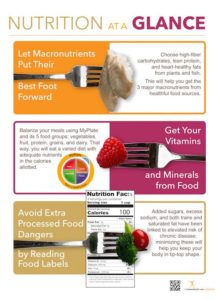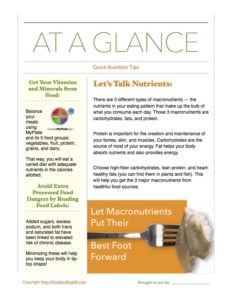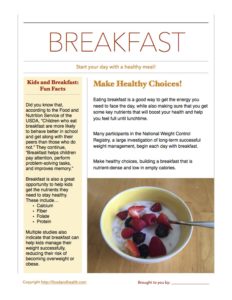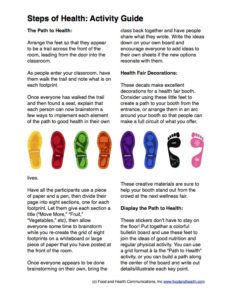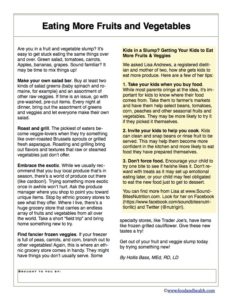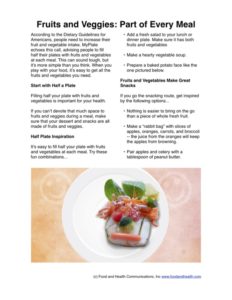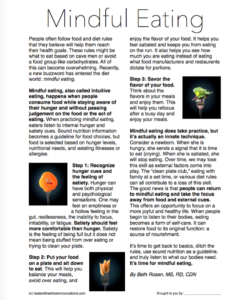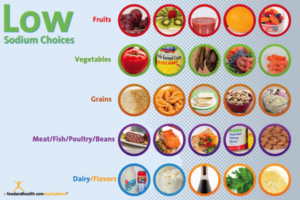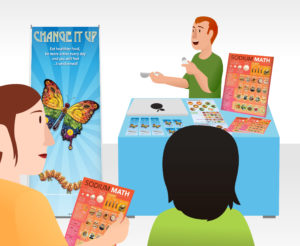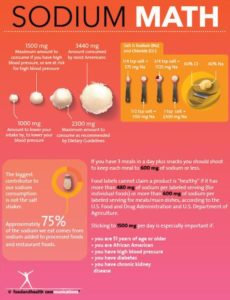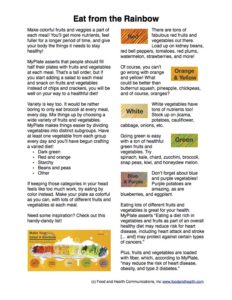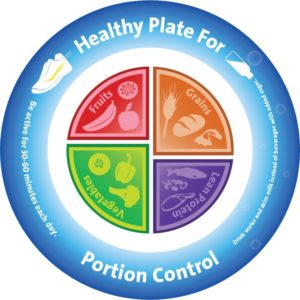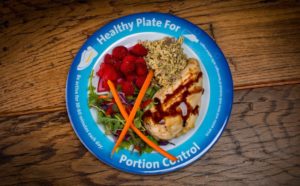Here’s a fun new way to help your clients learn and remember key nutrition lessons.
A brand-new poster!
Everyone gets so confused about how to eat healthfully. In today’s society, proper nutrition comes from following MyPlate, reading food labels, and eating the best options from each of the food groups. The Nutrition at a Glance poster shows key nutrition lessons in three easy steps. Plus, each step has an exciting visual of food!
- Step 1: Let macronutrients put their best food forward! Think lean, high fiber, and nutrient dense!
- Step 2: Get your vitamins and minerals from food! Follow MyPlate and get a varied diet with all of the food groups.
- Step 3: Learn how to read food labels so you can make the best choices that are lower in added fat, sugar, and salt (sodium).
This poster makes a fun visual for any room or event! It is even perfect for Nutrition Month celebrations!
To celebrate this fun new resource, I want to give you the handout that comes with it, for free!
Here you go!
Let’s Talk Nutrients:
There are 3 different types of macronutrients — the nutrients in your eating pattern that make up the bulk of what you consume each day. Those 3 macronutrients are carbohydrates, fats, and protein.
Protein is important for the creation and maintenance of your bones, skin, and muscles. Carbohydrates are the source of most of your energy. Fat helps your body absorb nutrients and also provides energy.
Choose high-fiber carbohydrates, lean protein, and heart-healthy fats (you can find them in plants and fish). This will help you get the 3 major macronutrients from healthful food sources.
Get Your Vitamins and Minerals from Food:
Balance your meals using MyPlate and its 5 food groups: vegetables, fruit, protein, grains, and dairy.
That way, you will eat a varied diet with adequate nutrients in the calories allotted.
Avoid Extra Processed Food Dangers by Reading Food Labels:
Added sugars, excess sodium, and both trans and saturated fat have been linked to elevated risk of chronic disease.
Minimizing these will help you keep your body in tip-top shape!
Here’s a printable PDF copy of the handout!
And here are a few fun nutrition resources from the Nutrition Education Store!



